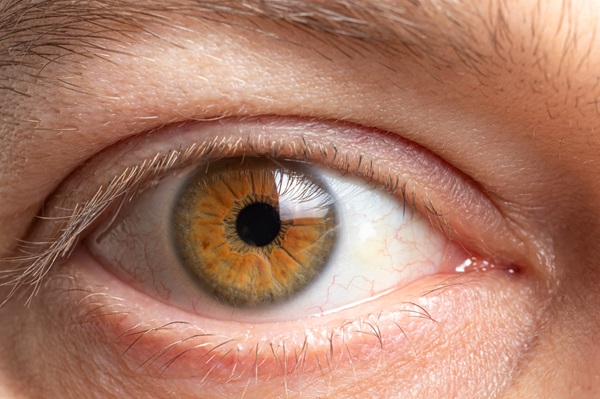Exploring Options for Cataract Treatment

Put plainly, cataracts are cloudy areas on the lens of the eye. An optometrist is necessary for cataract treatment as the condition seldom goes away on its own. However, the earlier cataracts are detected, the better treatment success odds are. Let us look closer at the condition and the treatments we offer.
Cataracts: what you should know
The eyes' lens is a clear structure comprising many proteins or crystallins. With age, these proteins naturally break down, forming cloudy patches. In turn, these patches can affect one's visual clarity. There are three known types of cataracts:
Pediatric cataracts
Though cataracts are commonly associated with the elderly or older individuals, children and babies can develop them. This condition is known as pediatric cataracts. It is considered more of a congenital disability and likely a result of genetics. However, it should be treated as soon as possible to prevent vision issues in the child as they grow and develop.
Secondary cataracts
A posterior capsular opacification, also known as a secondary cataract, occurs when the membrane covering the lens (the lens capsule) becomes cloudy. This is the most common form of the condition. However, with cataract treatment, it is reversible.
Traumatic cataracts
This form of cataracts can be more complex than the previously mentioned conditions. It occurs when the eye is damaged or injured. Even if the lens is not damaged, surrounding layers can make the lens vulnerable and cause it to break down.
Patients should be aware that cloudy patches do not form automatically. It takes time. However, some signs indicate that an individual needs to head to the optometrist. If the patient begins to see rings and halos, blurry vision, or cannot stand looking at a direct source of light due to its brightness (lamps, sun, candles), or see double, Some have even likened the new view to seeing the world as dirty or looking through a dirty screen or window. Driving and performing other daily tasks becomes difficult if not corrected early on.
Cataract treatments
The only known cataract treatment is through surgery. The procedure involves the optometrist removing the clouded lens with an intraocular lens (IOL). This artificial lens will permanently stay in the eye. The clear and flexible lens resembles a healthy, natural lens. With the many options available, the optometrist will review the most effective ones with the patient. After receiving cataract treatment, patients may need to rely less on glasses or contacts if they previously had refractive issues or errors, such as blurry vision due to the shape of the eye.
What to expect after cataract treatment
There will be an adjustment period for the first few days. It is common for the eyes to feel itchy, sticky, or uncomfortable. The patient may also have trouble seeing as the body adjusts and heals. However, vision clarity typically begins within the first three days after the procedure. It should be noted that some patients may take up to 10 weeks to experience the full benefits of cataract treatment.
Furthermore, patients will need a ride home and possibly help around the house if the surgery is performed on both eyes. The optometrist will likely send them home with bandages over their eyes. During the appointment, the optometrist will let you know how long the bandages should remain, but once removed, they may provide a pair of glasses for safety and vision adjustments.
The optometrist will review the rules for different scenarios in detail, such as how long to schedule off for work or school, when one can return to normal activities, and what to avoid altogether. However, patients should note that using body sprays, cleaning products, and dusting are out of the question for the first two weeks following the procedure.
Preventing cataracts
Though cataracts can be a result of genetics or congenital disabilities in children and aging in adults, there are ways to slow the condition from occurring. According to the National Eye Institute, the most effective ways to prevent or slow cataract progression are:
- Avoid eye injuries
- Avoid taking steroids
- Healthy food choices
- Over-alcohol-consumption
- Protect the eyes from the sun
- Smoking cessation
- Maintain regular eye exams
See clearly again
Cataracts can taint how you see the world. However, this does not have to be the case for you. If you have been diagnosed with or are experiencing symptoms, contact our Dallas office to learn more about cataract treatment or schedule an appointment.
Request an appointment here: https://www.texasoptical.net or call Texas Optical at (214) 771-7333 for an appointment in our Dallas office.
Check out what others are saying about our services on Yelp: Read our Yelp reviews.
Recent Posts
For those living with diabetes, undergoing a diabetic eye exam is one of the most important steps in protecting their vision and overall eye health. High blood sugar levels can lead to a range of complications, including conditions that damage the eyes over time. These exams help detect these issues before they become serious, allowing…
Contact lenses provide clear vision and convenience for individuals who prefer an alternative to eyeglasses. However, proper care and maintenance are essential to prevent infections, irritation, and eye damage. Neglecting hygiene practices can lead to serious eye conditions, including corneal ulcers and keratitis. Understanding how to clean, store, and handle contact lenses ensures long-term eye…
Maintaining eye health and preventing long-term issues is the result of consistent and quality vision care. Many people focus on overall wellness but may overlook daily habits that support healthy eyesight. However, taking simple steps each day can protect vision, reduce eye strain, and prevent future complications. By making eye health a priority, it is…
Prescription contacts provide vision correction, comfort, and convenience for those who do not want to wear glasses. However, caring for and wearing contacts takes some getting used to. Learning to insert, remove, and maintain them will help ensure a comfortable and safe experience.Not all contact lenses are the same, and choosing the right pair is…


